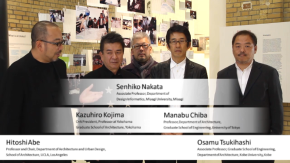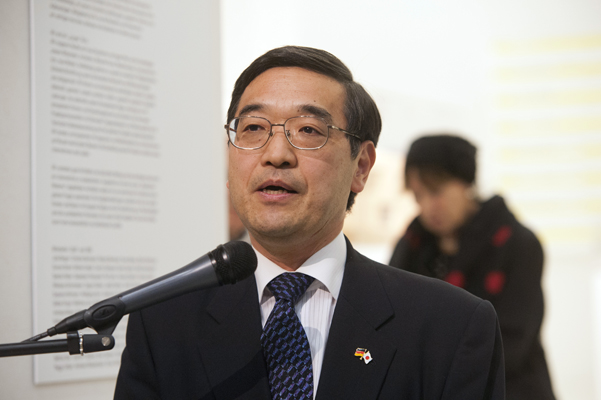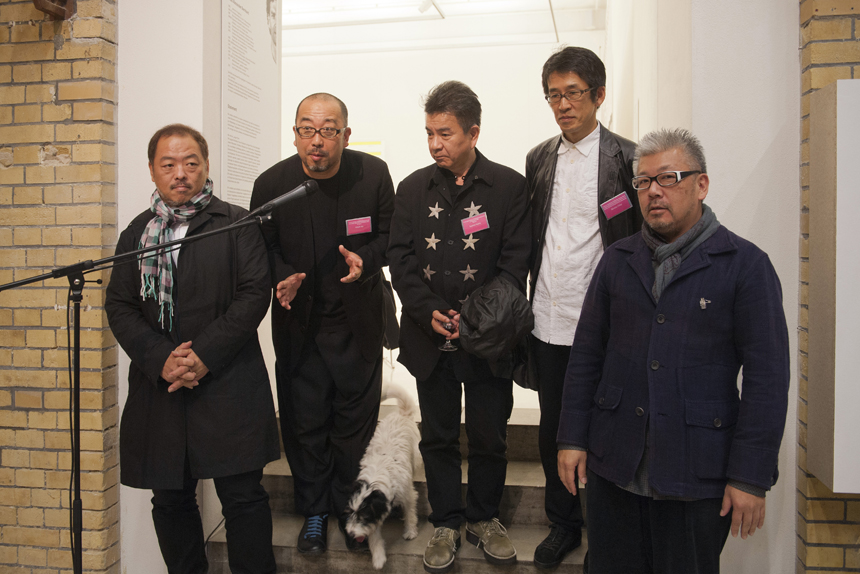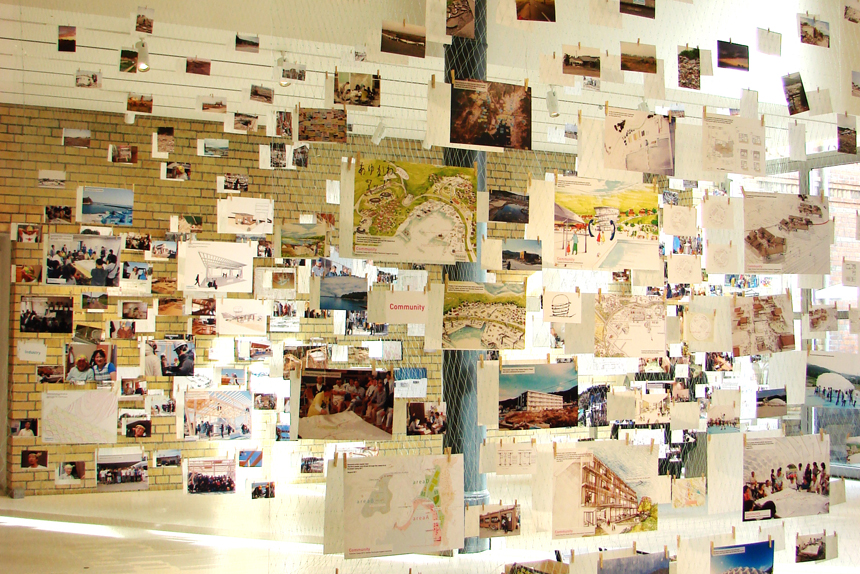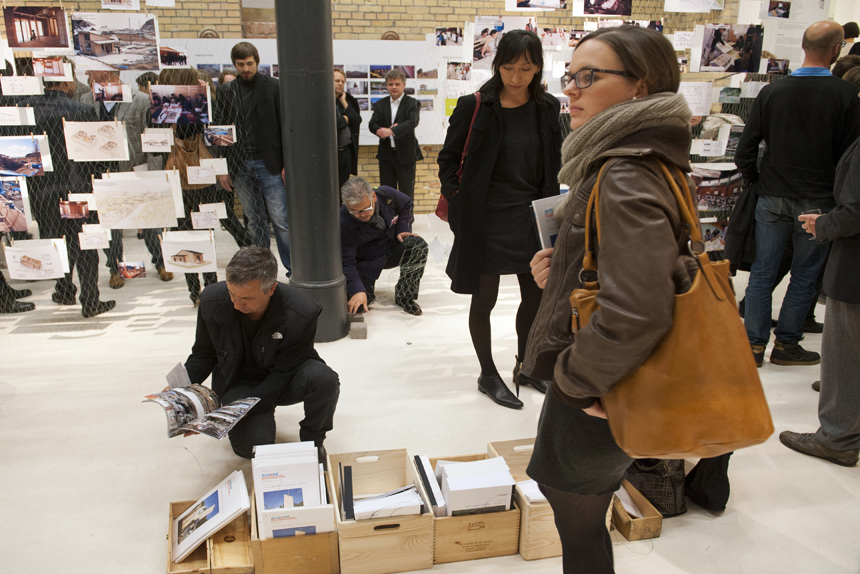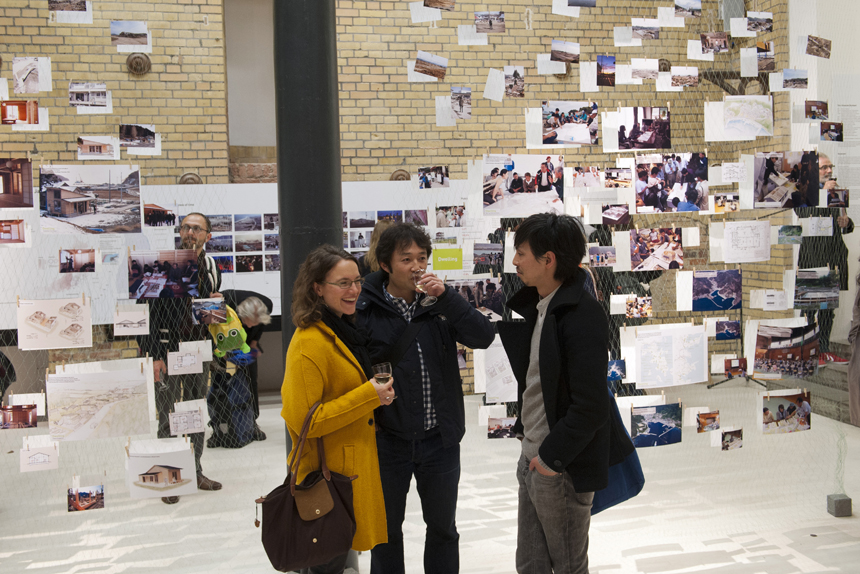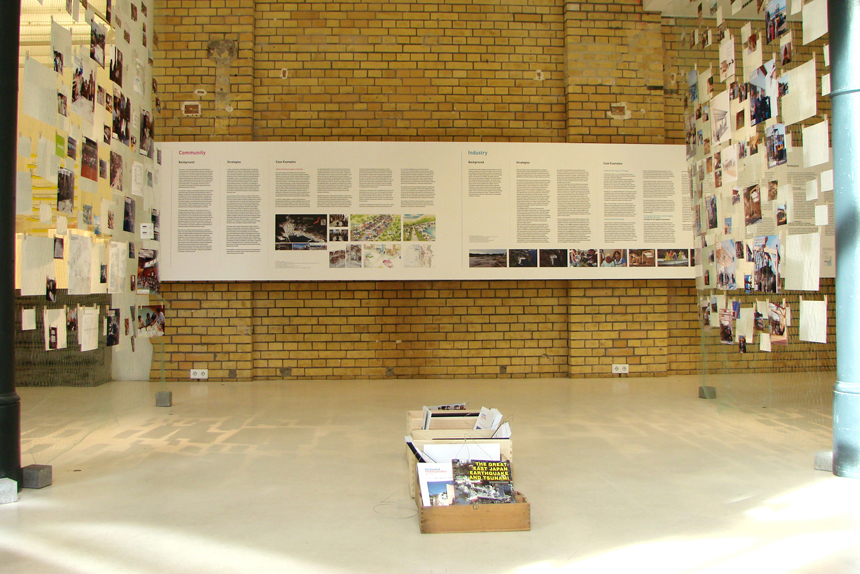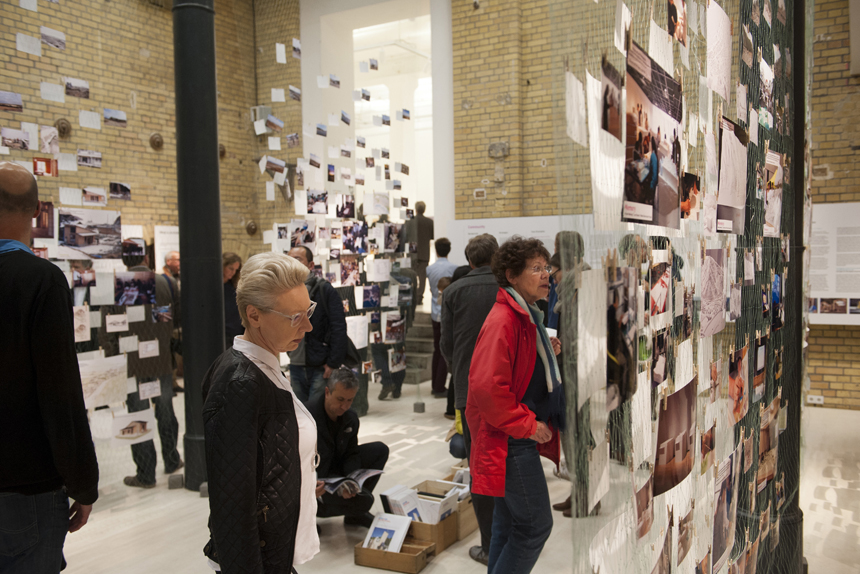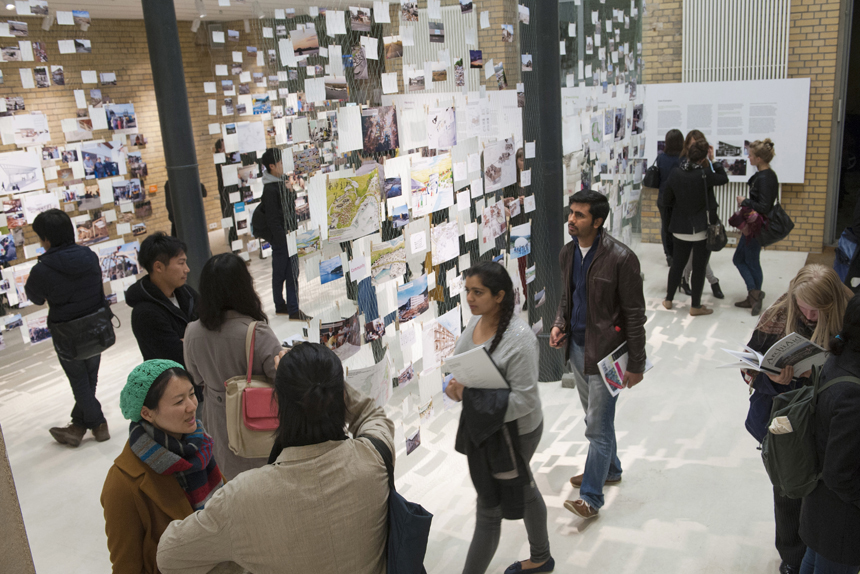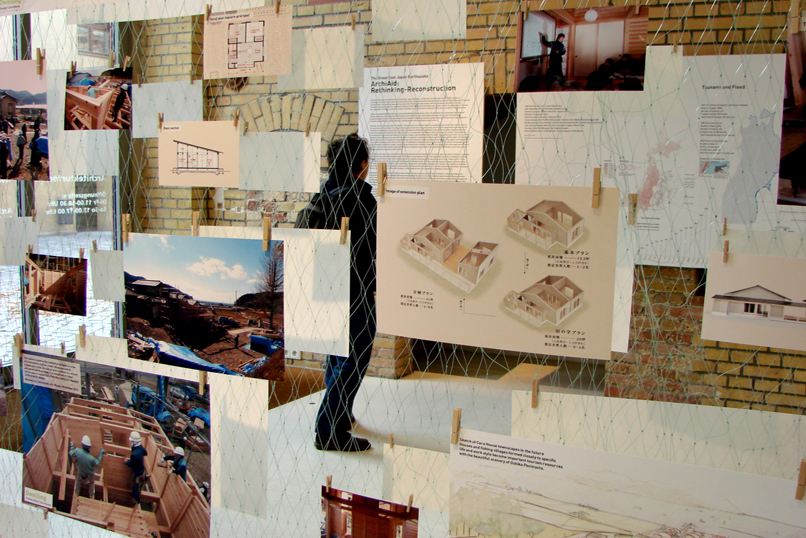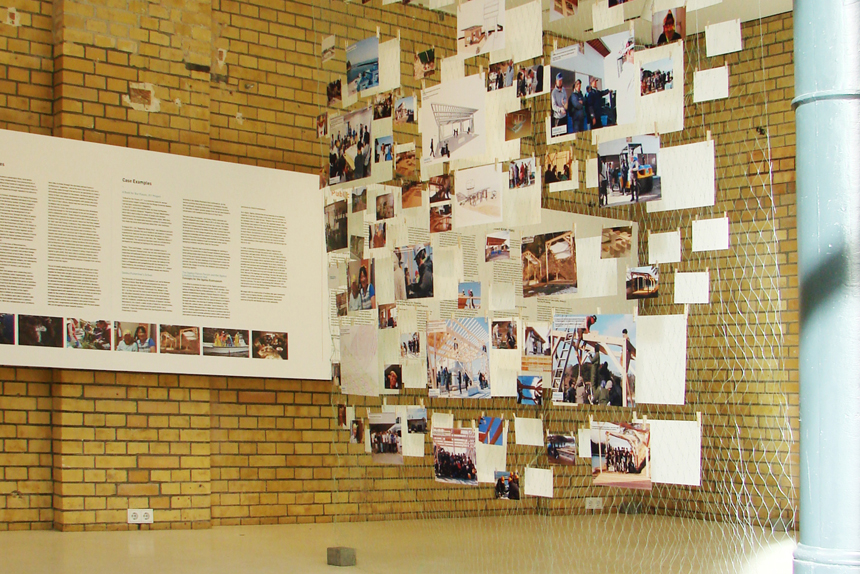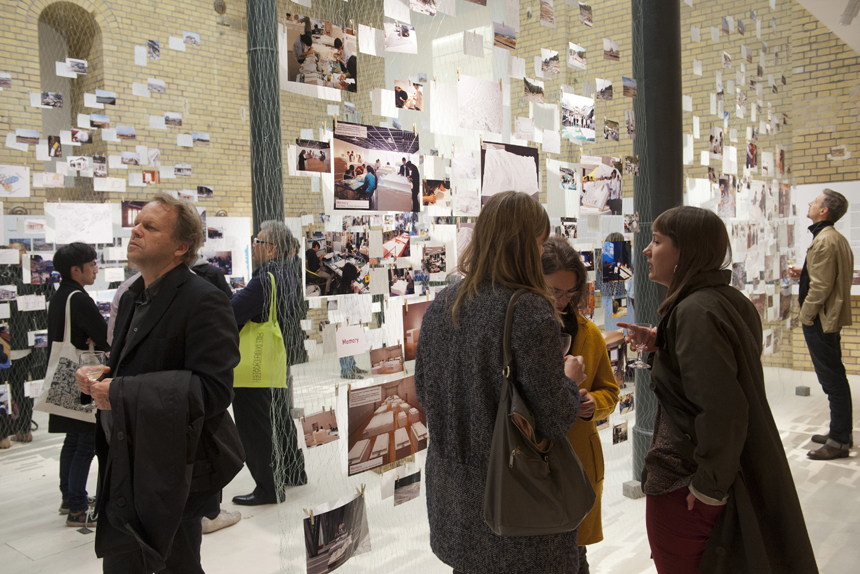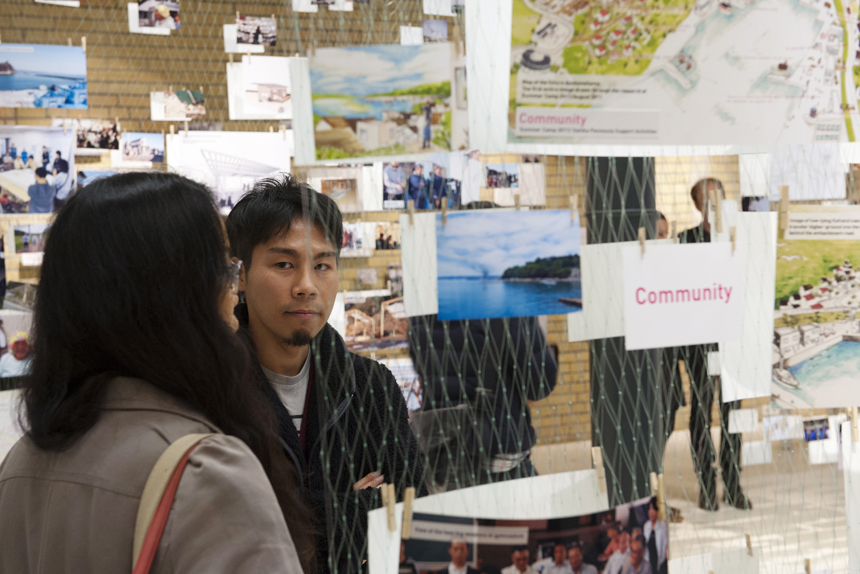ArchiAid: Rethinking-Reconstruction
The Great East Japan Earthquake:
Exhibition:
October 25 – November 28, 2013
Exhibition extended until january 5, 2014
Opening:
Friday, October 25, 2013, 6:30 pm
Speaking at the opening:
Dr. h.c. Kristin Feireiss, Aedes Berlin
Takayuki Miyashita, Minister, Embassy of Japan
Prof. Hitoshi Abe, University of California, Los Angeles
___________________
On the occasion of the Aedes exhibition opening we cordially invite you to the public debate at ANCB:
ArchiAid: The Great East Japan Earthquake Recovery Program
Architects between Society, Design and Politics
Time: Friday, October 25, 4:30pm
Place: ANCB, Christinenstr. 18/19, 10119 Berlin
The dialogue will focus the challenge of the architecture profession to connect and moderate between technical, governmental conditions and cultural behavior related to environmental needs. Architecture and urbanism lead not only to a restructure of landscape and the built environment but also modify how they are experienced. It is therefore a matter of understanding what impact disasters have on architectural thinking and acting in comparison to changes in the cultural perspective of the relationship of nature and technology. Such changes can be understood only with respect to their social and political contexts. If architecture is about social dreams of a society and hopes for a better future - then one has to become aware of the global dimensions of disasters between modernization and the boundaries of human knowledge. The challenge of architecture and urban planning lies in these contradictory preconditions. What does it mean for architects to design in a society that seeks its balance between an increasing technologization at the one hand, and a deepening environmental awareness on the other?
Welcome:
Hans-Jürgen Commerell, Director, ANCB The Metropolitan Laboratory, Berlin
Speakers - The Japanese architects involved in ArchiAid:
Hitoshi Abe, Professor and Chair, Department of Architecture and Urban Design, School of Arts and Architecture, UCLA, Los Angeles
Kazuhiro Kojima, C+A President, Professor at Yokohama Graduate School of Architecture (Y-GSA), Yokohama
Manabu Chiba, Professor, Department of Architecture, Graduate School of Engineering, University of Tokyo; Guest Lecturer, Art & Architecture School of Waseda University, Tokyo/Waseda
Senhiko Nakata, Associate Professor, Department of Design Informatics, Miyagi University, Miyagi
Osamu Tsukihashi, Associate Professor, Graduate School of Engineering, Department of Architecture, Kobe University, Kobe
Daniel Kerber, Founder, morethanshelters, Hamburg
Moderator:
Georg Vrachliotis, Chair of Architectural Theory, Karlsruhe Institute of Technology
The Debate is part of the ANCB program “Phoenix Reloaded: Rethinking Disaster Responses and Preparedness”.

